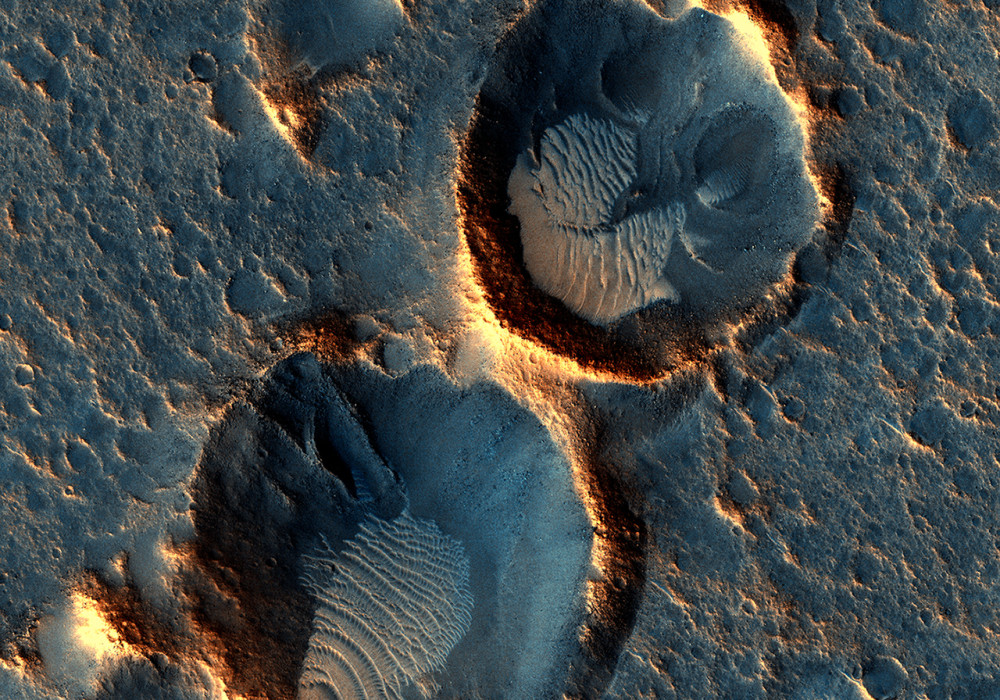Andy Weir, the author of the best-selling novel “The Martian,” had previously contacted the HiRISE team requesting that we take a picture of the Ares 3 landing site from his novel in Acidalia Planitia, within driving distance from the Pathfinder lander and Sojourner rover.
One of the main objectives of the HiRISE camera is to carry out “monitoring science”, which means we usually take images of certain areas of high scientific interest on regular intervals. We usually do so to monitor a seasonal or recurring process such as melting of ice in spring in the polar regions, dune monitoring , or recurring slope lineae . However, we also take multiple images to keep “checking up” on the progress of active rovers such as Curiosity to make sure it’s in good shape, and in order to help plan a safe, future route that would also place it within striking distance of areas of high scientific interest.
There is another key responsibility for the HiRISE camera, which is to help choose landing sites for future missions. One of the techniques we usually use is to image a certain site of interest at least twice when the weather conditions are similar, but with a small difference in viewing angle, much like what you would experience if you looked at something with only your right eye, then looked at it again with the left. By doing this, we are able to build a “stereo view” of the site, providing a chance to identify high and low points in the site more effectively. Another useful technique is to combine these two images using elevation data from laser altimeters to create a highly accurate “digital terrain model” or DTM for short.
DTMs allow us to view the locations in 3D and to analyze them by measuring the exact height of features that could be hazardous to the future mission such as large boulders or small impact craters. DTMs from HiRISE were a key factor in choosing the landing site for Curiosity in Gale Crater and are extensively being used as well to choose sites for the 2016 InSight lander and Mars 2020 rover missions. And now, we have a similar stereo pair for the Ares 3 landing site. That way, NASA can start planning on sending Mark Watney to Mars!
Written by: M. Ramy El-Maarry (30 September 2015)
This is a stereo pair with ESP_040776_2115 .
More info and image formats at http://hirise.lpl.arizona.edu/ESP_041277_2115
Image: NASA/JPL/University of Arizona
